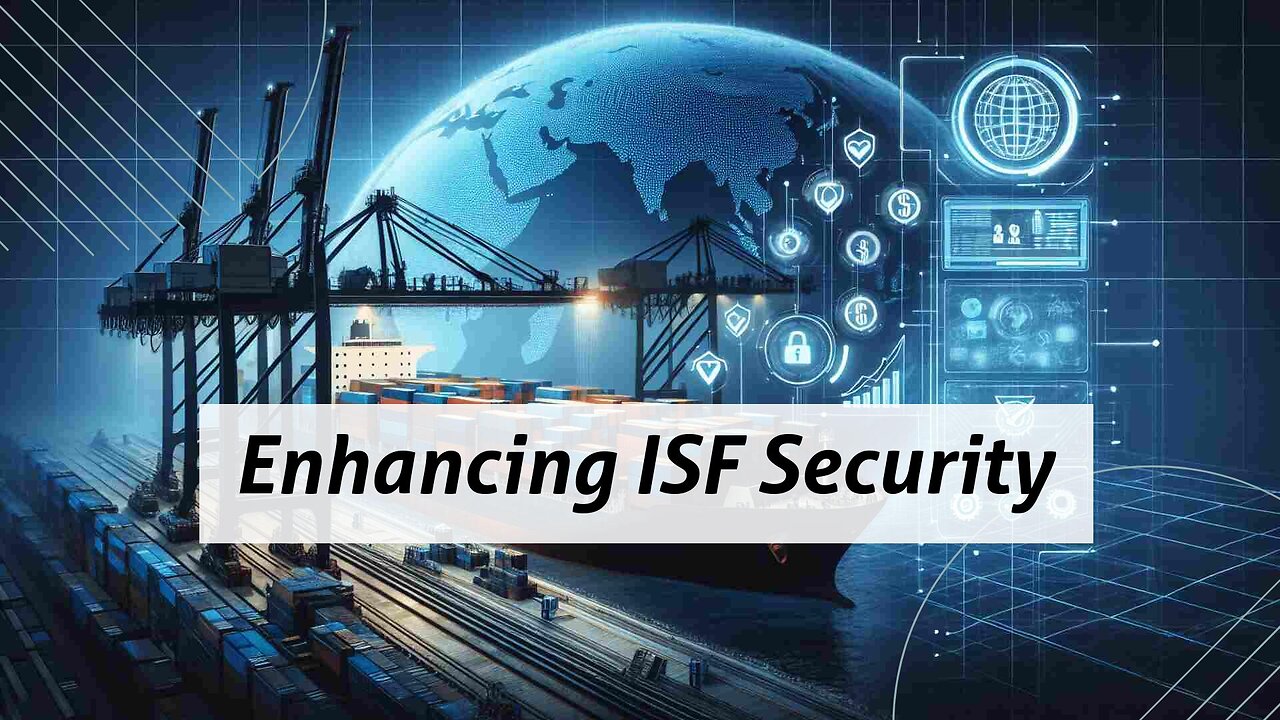Premium Only Content

How Importer Security Filing Enhances Supply Chain Security
ISF Checklist || 805-970-7918 || contact@isfchecklist.com || www.isfchecklist.com
This video discusses the influence of Importer Security Filing (ISF) on supply chain security best practices in the field of customs brokerage and international trade. ISF, also known as a 10+2 filing, is a mandatory requirement by the US Customs and Border Protection (CBP) for shipments imported by vessel into the United States. ISF promotes visibility and transparency in the supply chain by requiring importers to provide detailed information about their cargo. It encourages collaboration among stakeholders and fosters a culture of accountability and responsibility. ISF also enables the use of data analytics and advanced technologies to enhance risk assessment capabilities. Additionally, it has led to the adoption of additional security measures and is an integral part of comprehensive supply chain security programs.
#usimportbond #isfcustomsbroker #uscustomsclearing #isfentry
Video Disclaimer Here: This video is purely educational and has no ties with the US government.
00:44 ISF (Importer Security Filing) is a mandatory requirement by U.S. Customs and Border Protection for shipments entering the United States by vessel, aimed at providing advance information to ensure cargo security and identify potential threats.
01:36 ISF promotes visibility and transparency within the supply chain by requiring detailed information from importers, encouraging collaboration among stakeholders, and enabling data analytics for enhanced risk assessment capabilities.
03:10 The implementation of ISF has led to the adoption of additional security measures like tamper-evident seals, secure packaging, and advanced tracking systems to protect goods and deter security threats.
03:39 ISF is a crucial component of comprehensive supply chain security programs like CTPAT, creating a secure global trade network that benefits importers, exporters, and all parties involved by reducing risks of disruptions, delays, and financial losses.
-
 DVR
DVR
In The Litter Box w/ Jewels & Catturd
21 hours agoReturn to Sender | In the Litter Box w/ Jewels & Catturd – Ep. 740 – 2/12/2025
14.7K9 -
 1:32:17
1:32:17
The Quartering
3 hours agoDOGE Storms the Department of Education, Trump FIRES USAID head, and Teacher freed from Russia
44.2K26 -
 59:57
59:57
The White House
3 hours agoPress Secretary Karoline Leavitt Briefs Members of the Media, Feb. 12, 2025
157K176 -
 1:09:47
1:09:47
Tucker Carlson
3 hours agoKen Paxton: How Soros Protects Drug Cartels, Being Blacklisted by Fox News, and the Laken Riley Act
109K76 -
 LIVE
LIVE
Film Threat
7 hours agoCAPTAIN AMERICA: BRAVE NEW WORLD REVIEW (NON-SPOILER) | Hollywood on the Rocks
132 watching -
![[Ep 607] Constitutional Crisis! There Is No Proof! AAARRRGG! – Leftist Lunacy & Why It Will Fail](https://1a-1791.com/video/fwe2/bb/s8/1/3/0/u/O/30uOx.0kob-small-Ep-607-Constitutional-Crisi.jpg) LIVE
LIVE
The Nunn Report - w/ Dan Nunn
1 hour ago[Ep 607] Constitutional Crisis! There Is No Proof! AAARRRGG! – Leftist Lunacy & Why It Will Fail
224 watching -
 3:19:53
3:19:53
Right Side Broadcasting Network
6 hours agoLIVE REPLAY: White House Press Secretary Karoline Leavitt Holds a Press Briefing - 2/12/25
155K66 -
 11:08
11:08
China Uncensored
2 hours agoChina Will Betray You
13.8K8 -
 17:38
17:38
Silver Dragons
3 hours agoTRUMP ENDS THE PENNY - Coin Dealer on the END OF CASH! Is This Just the Start?!?
7.38K5 -
 59:58
59:58
The Tom Renz Show
6 hours agoGeoengineering & Immigration Riots - Prepping to Keep Your Family Safe
5.49K2